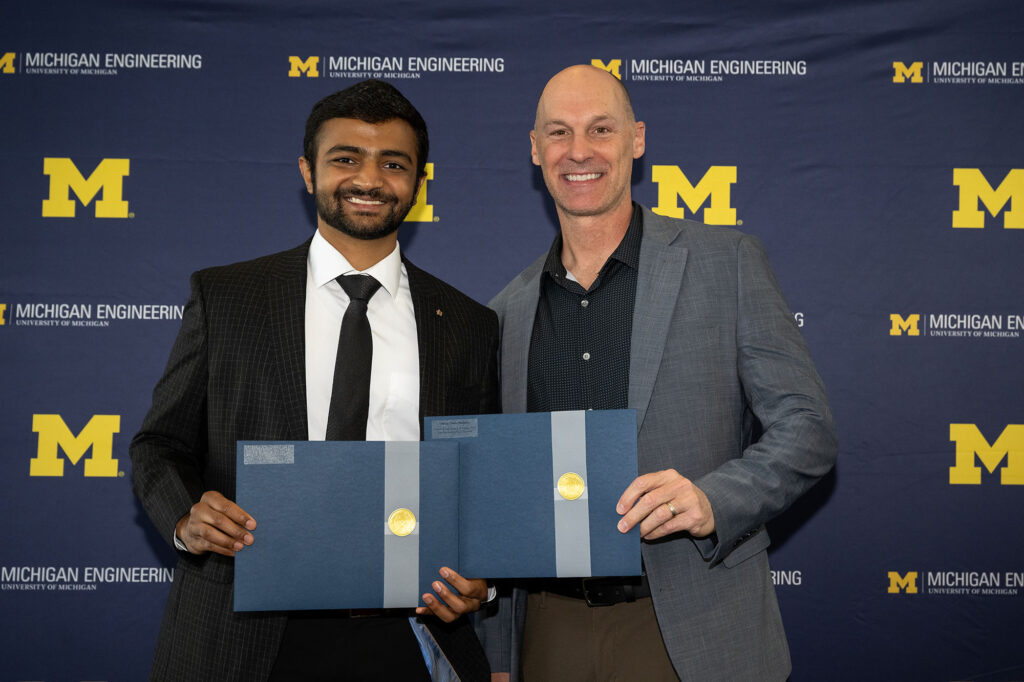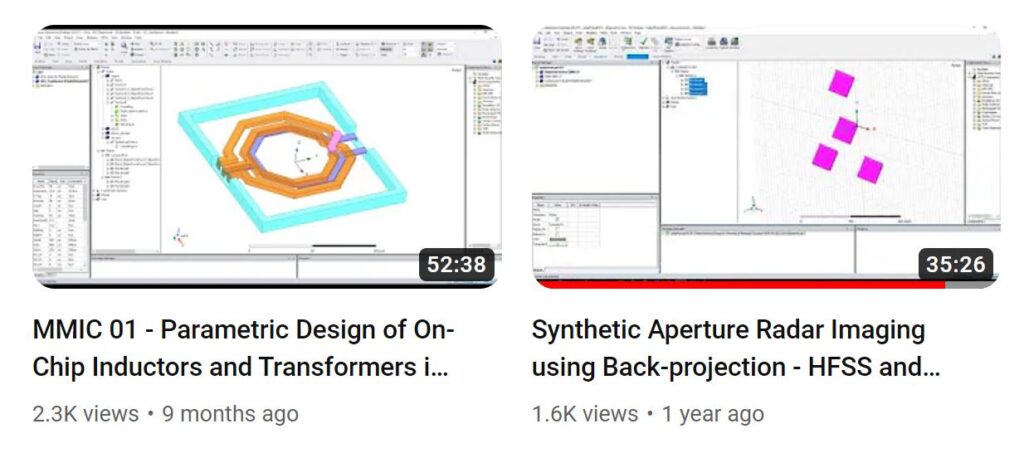Aditya Varma Muppala doubly recognized for outstanding teaching and research

Aditya Varma Muppala, PhD student in Electrical and Computer Engineering, earned two College of Engineering awards for his excellence in teaching and research: the Richard F. and Eleanor A. Towner Prize For Outstanding GSIs; and the Richard F. and Eleanor A. Towner Prize For Outstanding Ph.D. Research. He has made measurable and impactful contributions in each area.
Aditya served as a graduate student instructor for the undergraduate course, EECS 215: Introduction to Electronic Circuits, and the graduate course EECS 533: Microwave Measurements Laboratory. EECS 215 is a course required by all undergraduate students in the electrical engineering and the computer engineering programs.
“He took initiative in organizing engaging discussion sessions and producing written and video content to improve the student learning experience,” said Prof. Ehsan Afshari. “A tutorial he made on MATLAB programming has been used as a reference for the course.”
As a GSI for EECS 533, Aditya was responsible for the proper functioning of all the equipment used in the course’s 6 labs, each of which includes 8-10 intricate experiments. Some of these experiments are done in the anechoic chamber, a 60’ room designed to absorb electromagnetic waves for specialized testing. When damage to an optical fiber in the chamber’s communications channel rendered the chamber unusable, he found an innovative solution that allowed students to complete their work in the lab.
“Creativity is key to putting out fires,” said Aditya.
Aditya also designed three new CAD experiments that he believed would be helpful additions to the course, taking care that they did not add to the overall workload. These were ultimately adopted by the instructor, Prof. Kamal Sarabandi. As a final example of Aditya’s dedication to student learning, he recorded a video to help students learn a complicated SAR CAD experiment. A year later, the video has been viewed 1.6K times by individuals around the world. Its success has prompted him to start a lecture series on YouTube on the fundamentals of radar signal processing and tutorials on millimeter-wave integrated circuits.

“This type of information is traditionally passed down from senior graduate students,” said Aditya. “Such a hierarchy of knowledge creates a family tree of successful research groups and can discourage new researchers to take up advanced research in a given area.”
“This experience gave me the opportunity to explore new pedagogical avenues and has encouraged me to pursue my love of teaching in ways I never expected,” added Aditya.
EECS 533 was a course Aditya first encountered as a student. The final project he worked on with another student resulted in a paper at IEEE Antennas and Propagation Society (AP-S) 2021, and was subsequently published as a journal paper in the IEEE Transactions on Instrumentation and Measurement.
In all, Aditya has 23 publications in peer-reviewed journals and conferences; he is first author on 16 of them. Last year, he received a Rackham Predoctoral Fellowship to support his development of novel imaging radars [read more].
Imaging radars are high-resolution imaging devices that have the unique ability to see through objects, making them invaluable for concealed weapons detection, through-the-wall imaging, and autonomous vehicle navigation. However, they are very expensive and bulky.
“The focus of my Ph.D. dissertation is to make high-resolution imaging radars that are accessible, scalable and portable,” said Aditya, who is co-advised by Professors Ehsan Afshari and Kamal Sarabandi.
His dissertation is a virtual how-to guide for building an imaging radar system that is approximately 200 times cheaper and 100 times smaller than existing state-of-the-art commercial systems, while maintaining the same imaging speed and quality. He is co-inventor on a related patent.
Throughout his time at Michigan, Aditya has worked on a variety of projects as a member of Afshari’s and Sarabandi’s research groups, making important and sometimes groundbreaking contributions to each. As one example, he was part of a group developing a state-of-the-art radar system for the automotive market. To convert a 1-D radar into a rapid 2-D imaging system, Muppala suggested the use of a novel reflector antenna which he designed and fabricated.
“The images and videos we got from this system are unprecedented in the academic literature,” said Sarabandi. The work was presented at IEEE AP-S 2023 and published in the IEEE Transactions on Geoscience and Remote Sensing.
While not directly related to his teaching and research awards, Aditya has also contributed in significant ways to Michigan Engineering’s attempt to highlight the PhD research of all its students. He co-chaired the 2023 Engineering Graduate Symposium; he was instrumental in the planning of the first ever college-wide 3-minute thesis (3MT) competition; and he successfully introduced a new award called the Equity Centered Engineering Award.
“I am incredibly lucky to have had the opportunity to come to a premier university and lose myself in research and teaching, and help provide the same opportunity to others,” said Aditya. “I am driven by the desire to pay forward my privileges and to empower those with aspirations of shaping futuristic technologies.”
 MENU
MENU